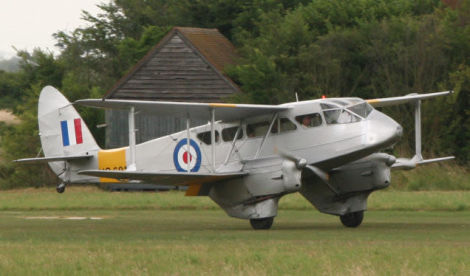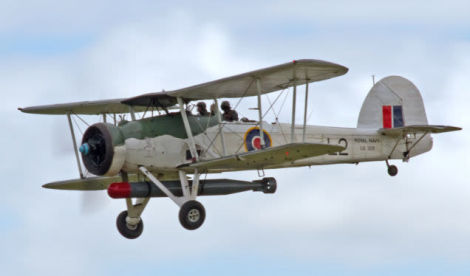Welcome to This Date in Aviation History, getting of you caught up on milestones, important historical events and people in aviation from April 15 through April 17.
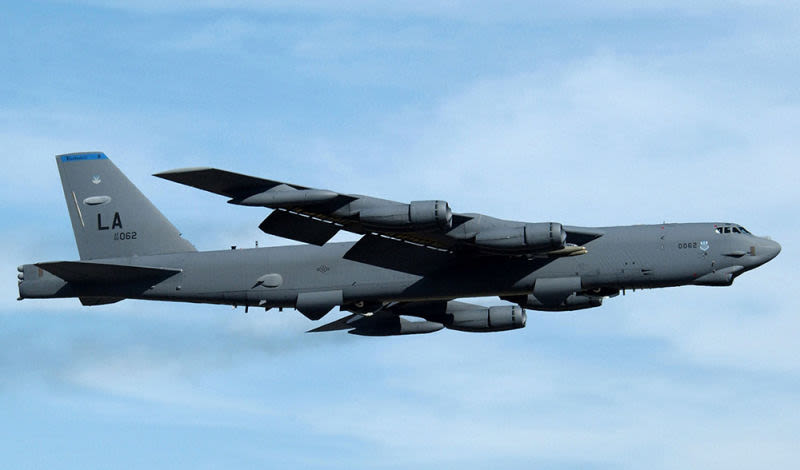
April 15, 1952 – The first flight of the Boeing B-52 Stratofortress. By the end of WWII, Boeing had earned a solid reputation for making large bombers with the rugged B-17 Flying Fortress and the state-of-the-art B-29 Superfortress. But with the coming of both the jet age and the nuclear age, the Air Force needed a new bomber with extreme range that could fly deep into enemy territory to deliver nuclear weapons. Initially, Boeing proposed the Model 462 in 1946, a straight-wing bomber that would be powered by six turboprop engines. Essentially, it would be a scaled-up version of a WWII bomber, with at least five defensive turrets and accommodations for two crews that could rotate during long-range missions. But over the next year of development, the Air Force kept changing the requirements, and Boeing kept changing the design. By the end of 1947, the program was on the verge of cancelation.
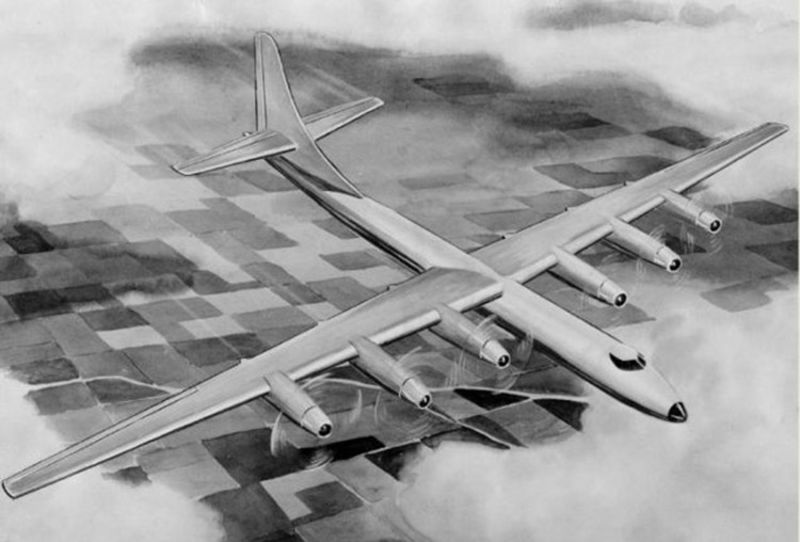
Though the turbojet engine was clearly the powerplant of the future, the Air Force wasn’t so sure, and wanted to hedge its bets by sticking with turboprops. After all, range was a primary concern, and early jet engines were notoriously thirsty. Boeing proposed yet another turboprop design in October 1948 and, when the Air Force wasn’t impressed with its capabilities, a team of Boeing engineers working in a hotel room in Dayton, Ohio came up with the preliminary design of an eight-engine turbojet bomber based on the B-47 Stratojet and its 35-degree swept wing. Similar to the B-47, the engines on the Stratofortress would be housed in pods under the wings, and the landing gear would be centered on the fuselage with outriggers on the wings. To handle crosswind landings, Boeing came up with the innovative solution of having the main landing wheels pivot up to 20-degrees to stay aligned with the runway centerline. Like the B-47, the two pilots would be seated in a tandem configuration under a greenhouse canopy, but Air Force General Curtis LeMay, a veteran of WWII bombing campaigns, insisted that the pilots be seated side by side. Only three copies of the initial B-52A model were built, and the first production model, the B-52B, entered service with the Air Force on June 29, 1955. This aircraft featured improved avionics and engines that could achieve an extra 12,000 pounds of thrust by using water injection.
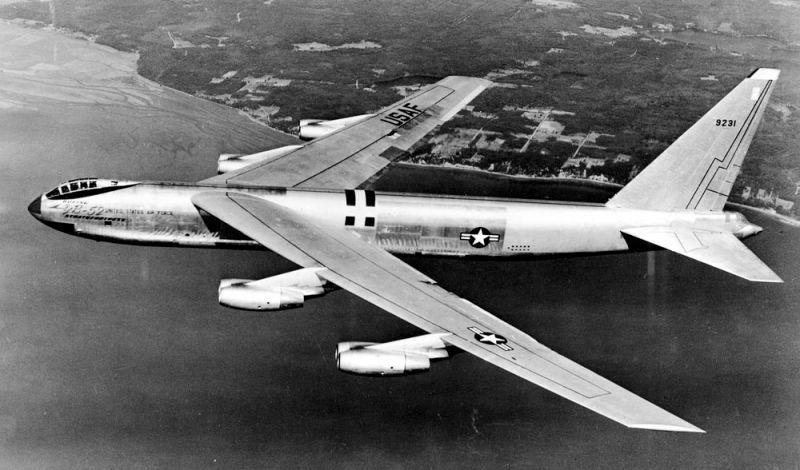
As a product of the Cold War, the B-52's primary mission was to deliver nuclear weapons, and though it was never called on to carry out that mission, it still served as a powerful deterrent to Soviet aims around the world. When the arrival of the surface to air missile jeopardized the B-52's high altitude mission, the bomber showed its tremendous flexibility by adapting to low level penetration missions. And, in a further testament to its flexibility, the bomber that was originally designed solely to drop nuclear munitions became one of the most powerful weapons of conventional warfare when it went into battle in Vietnam. Beginning with Operation Rolling Thunder in 1965, and following modifications to carry still more bombs, B-52 crews flew a total of 124,532 sorties throughout the war. A typical bomb load for the B-52 in Vietnam was 54,000 pounds of conventional bombs, or about the same load as ten B-17s.
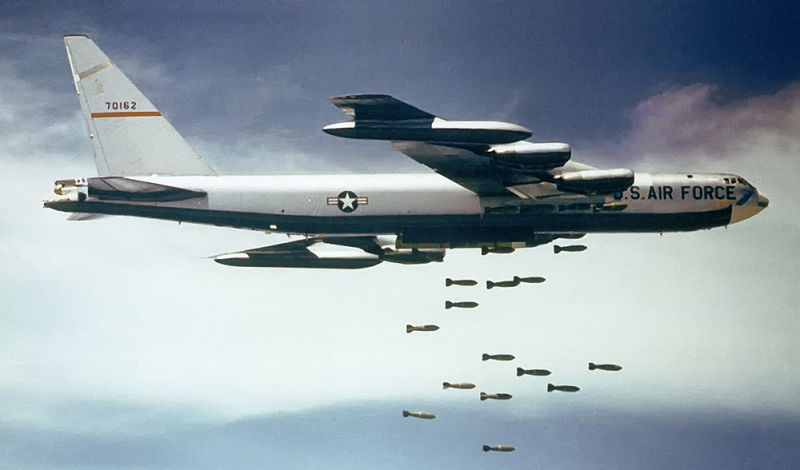
Following Vietnam, many of the older B-52s were retired due to their age, though newer G and H models were kept active for nuclear standby missions. Many were relegated to the Arizona desert, then destroyed as part of arms limitation treaties with the Soviet Union. When America went to war in the Persian Gulf, B-52s took part in Operation Desert Storm, flying from bases in England, Spain, Saudi Arabia and as far away as Louisiana to attack targets in Iraq. Despite efforts to replace the B-52, first with the Rockwell B-1 Lancer, the Buff soldiered on, providing capabilities in firepower and mission flexibility that simply can’t be matched by newer designs. When the Lancer is replaced by the proposed B-21 Long Range Strike Bomber, the B-52 will still be flying. In fact, the Air Force currently plans to keep the B-52 in service until 2045, an astonishing 90 years after it first entered service, and plans are currently underway to replace the eight Pratt & Whitney TF33 low-bypass turbofans with eight similarly sized regional jet engines.

April 15, 1935 – The first flight of the Douglas TBD Devastator. The 1930s was an extraordinary decade for aircraft development. The fabric-covered metal and wooden frames of the biplane era were left behind in favor of the all-metal cantilevered monoplane, and each new aircraft brought further innovations in construction, capability, speed, or range. But with the outbreak of WWII in 1939, aircraft development revved into high gear, and warplanes that were innovative and groundbreaking when they rolled out were quickly rendered obsolete. Such was the fate of the Douglas TBD Devastator.
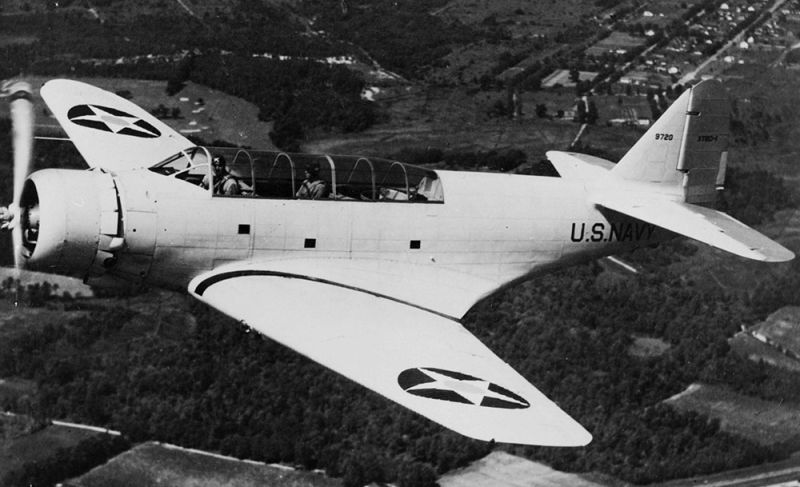
In 1934, the US Navy was seeking a new dive bomber to operate from its carriers, and the Devastator entered into competition for a Navy contract against the Brewster SBA, the Vought SB2U Vindicator, and the Northrop BT-1 (which would later evolve into the Douglas SBD Dauntless). The Devastator, which won the competition, provided many firsts for the Navy. It was the first monoplane to enter carrier service, it was the Navy’s first all-metal aircraft, and the first with a fully enclosed cockpit. It was also the first to have hydraulically powered folding wings. The semi-retractable landing gear allowed the wheels to protrude from under the wings and protect the airframe in the event of a wheels-up landing. The Devastator could carry up to 1,200 pounds of bombs or a single torpedo, had a single forward-firing .30 or .50 caliber machine gun, and a rear-firing .30 caliber machine gun for defense against enemy fighters. Power came from a single Pratt & Whitney R-1830 Twin Wasp radial that gave the Devastator a maximum speed of 206 mph, which was relatively fast for its day. However, despite all of these innovations, by the Japanese attack on Pearl Harbor in 1941, the Devastator was already almost completely obsolete, just six years after its maiden flight.
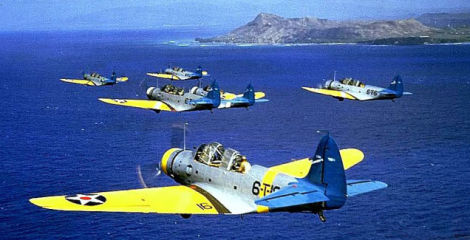
Nevertheless, Devastator pilots fought well in the opening stages of the war in the Pacific, effectively attacking ground and shipping targets while flying from the carriers USS Enterprise (CV 6), USS Yorktown (CV 5) and USS Lexington (CV 2). But the pivotal Battle of Midway on June 3-7, 1942 showed that the Devastator’s time had completely passed. In the opening stages of the battle, 41 Devastators, nearly all the TBDs in operation at the time, were dispatched against the Japanese fleet from USS Hornet (CV 8), Enterprise and Yorktown. Due in large part to its lack of maneuverability and slow speeds, the Devastator proved to be a sitting duck for Japanese guns. On torpedo runs, the TBDs had to maintain a mere 115 mph in order to drop their torpedoes, which made them easy prey for Japanese A6M Zero fighters and antiaircraft gunners. Of the 41 aircraft that took off, only six returned from the mission, and they had scored no hits on the Japanese carriers. Part of this was due to malfunctioning Mark 13 torpedoes, but clearly, the Devastator’s days as an effective torpedo bomber were over. However, the loss of the Devastators and their crews was not entirely in vain, as the attacks left the Japanese carriers vulnerable for the follow-up attacks by Dauntless dive bombers which ultimately resulted in a lopsided victory for the US Navy and heralded a titanic shift in the balance of power in the Pacific.
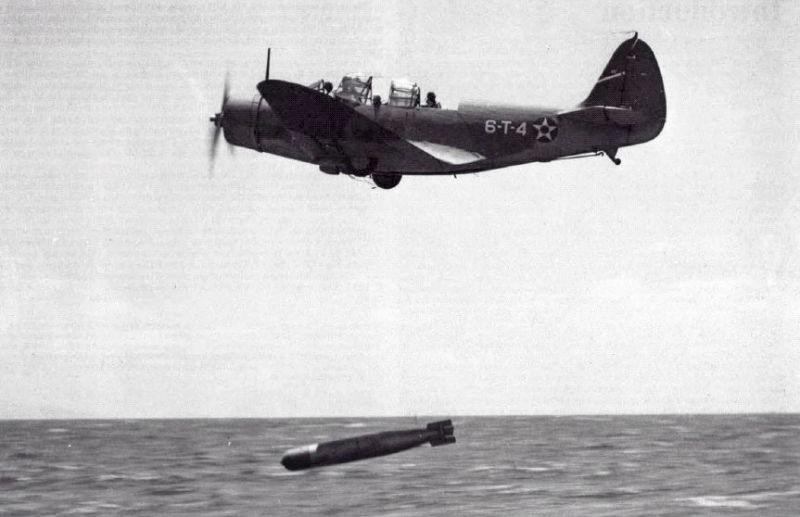
After Midway, the Navy immediately removed the TBD from frontline service, and the remaining aircraft were relegated to flight training duties or served as training pieces for mechanics and firefighters. The final Devastator was scrapped in 1944, and none of the 130 production aircraft remain today. Though the Devastator’s replacement, the Grumman TBF Avenger, fared little better at first, shifting tactics and the gradual achievement of air superiority in the Pacific finally allowed the torpedo bomber to become an effective weapon later in the war.
Short Takeoff
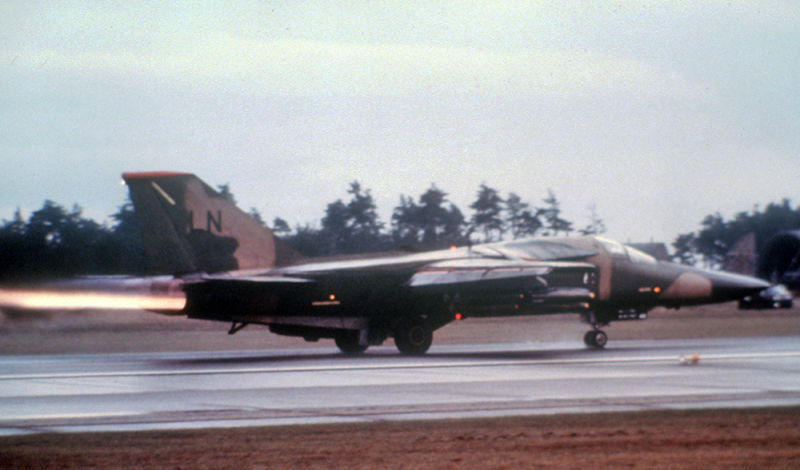
April 15, 1986 – United States Air Force, Navy, and Marine Corps aircraft attack Libya in Operation El Dorado Canyon. In response to the bombing that killed three and injured more than 200 others in a Berlin discotheque frequented by US soldiers, the United States launched airstrikes against Libyan president Muammar Gaddafi after Libya was suspected of orchestrating the bombing. Eighteen F-111F tactical bombers and four EF-111A Raven electronic warfare (EW) aircraft flew from bases in Britain, combined with attack and EW aircraft from the carriers USS Saratoga, USS America and USS Coral Sea sailing off the Libyan coast in the Gulf of Sidra. The Americans struck numerous aircraft and radar stations at 2:00 am local time, and Gaddafi himself may also have been a target, though he escaped injury. The Libyan government reported at least 40 casualties from the bombing, including one who may have been Gaddafi’s infant daughter. One American F-111 was shot down with the loss of its two-man crew.
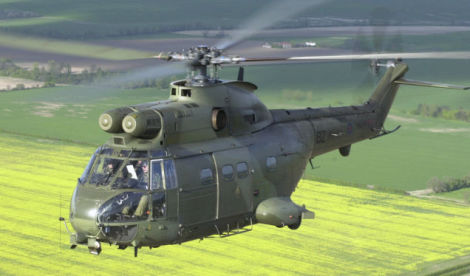
April 15, 1965 – The first flight of the Aérospatiale SA 330 Puma, a medium transport/utility helicopter originally developed by Sud Aviation to meet a requirement by the French Army for a helicopter that could carry 20 troops or cargo in all weather conditions. After the purchase of the Puma by the Royal Air Force, France and England entered into a production partnership that eventually included Romania and South Africa. The Puma has seen action in numerous conflicts, including the Falklands War and the First Gulf War, and is also a popular civilian transport helicopter, particularly for offshore oil corporations.
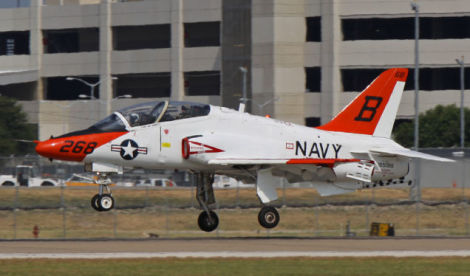
April 16, 1988 – The first flight of the McDonnell Douglas T-45 Goshawk, a fully carrier-capable trainer developed from the British Aerospace Hawk Mk 60. The Goshawk entered service in 1991 and eventually replaced the older North American T-2 Buckeye and Douglas TA-4 Skyhawk for the US Navy and US Marine Corps. The T-45 provides a platform for intermediate and advanced strike pilot training, with aircraft currently based at NAS Meridian in Mississippi and NAS Kingsville in Texas. Though the US Air Force has selected the Boeing T-X as its next generation trainer, the Navy plans to keep flying the Goshawk until at least 2035.
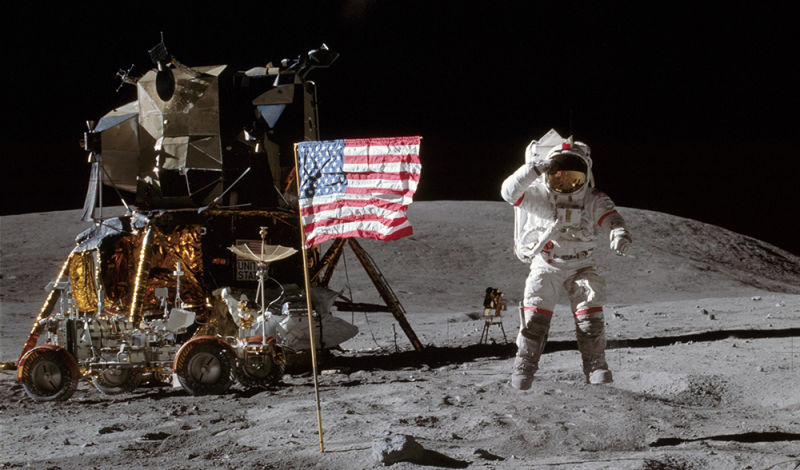
April 16, 1972 – The launch of Apollo 16, the tenth manned mission of the Apollo program and the fifth mission to land astronauts on the Moon. Commander John Young and Lunar Module Pilot Charles Duke spent 71 hours on the lunar surface, where they conducted three moonwalks and collected over 200 pounds of lunar samples, some of which served to disprove the theories about volcanic origins for some of the Moon’s features. Young and Duke also drove the second Lunar Roving Vehicle (LRV) a total of 16.6 miles. Command Module Pilot Ken Mattingly completed 64 orbits of the Moon in the Command Module, and performed a spacewalk on the return flight to retrieve film capsules from the exterior of the Service Module. There would be just one more launch in the Apollo program, Apollo 17, eight months later. Apollo 16 returned to Earth on April 27, 1972.

April 16, 1949 – The first flight of the Lockheed F-94 Starfire. Following the failure of the Curtiss-Wright XF-87 Blackhawk, the Starfire was hastily developed from the Lockheed T-33 Shooting Star as an all-weather day/night interceptor. When it entered service in 1950, the Starfire replaced both the Northrop F-61 Black Widow and the North American F-82 Twin Mustang, and was the first operational US Air Force fighter to employ an afterburning engine and the first all-weather fighter to see service in the Korean War. Though produced in large numbers, the Starfire served for just eight years before being replaced in the interceptor role by the Northrop F-89 Scorpion and North American F-86D Sabre.
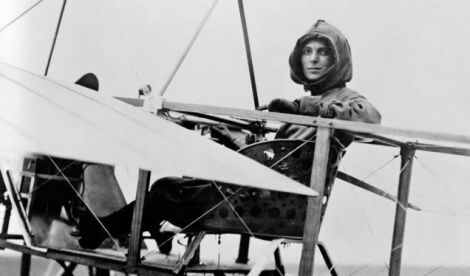
April 16, 1912 – Harriet Quimby becomes the first woman to fly across the English Channel. In 1911, Quimby became the first woman to earn a pilot’s license in the United States, and her exploits were an inspiration to many women of her day who railed against male-dominated society. Quimby’s cross-Channel flight was unfortunately overshadowed by news of the sinking of the RMS Titanic just one day after her historic flight. Quimby died on July 1, 1912 when, for unknown reasons, her Blériot XI monoplane suddenly pitched forward, ejecting both her and her passenger at an altitude of 1,500 feet. Ironically, the plane came to earth relatively undamaged.
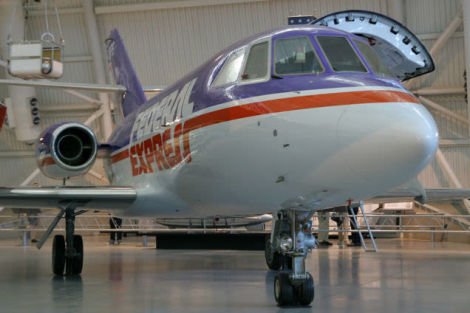
April 17, 1973 – Federal Express delivers its first overnight package. Starting with 14 Dassault Falcon business jets and 389 employees, Federal Express began operations from Memphis, TN by delivering 186 packages to cities on the East Coast of the United States. Adopting the name FedEx in 2000, the company now employs more than 425,000 workers and operates a fleet of more than 650 aircraft serving more than 375 airports worldwide. Each day, FedEx delivers more than 14 million packages. FedEx’s first airplane, a Dassault Falcon 20 nicknamed Wendy, is on display at the Smithsonian’s Steven F. Udvar-Hazy Center near Washington, DC.
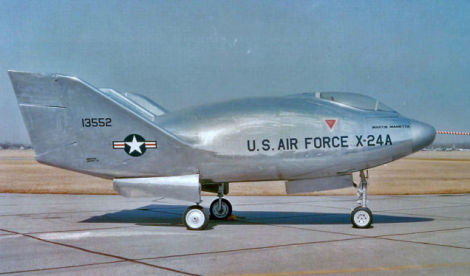
April 17, 1969 – The first powered flight of the Martin Marietta X-24A, the fourth in a series of experimental aircraft developed to explore the concept of the lifting body design following the NASA M2-F1, the Northrop HL-10, and the Northrop M2-F2. Built without traditional wings, lifting bodies rely on the aerodynamic shape of the fuselage to generate lift and allow for controlled flight. The X-24A was carried aloft by a Boeing B-52 Stratofortress mothership, then released to fly under rocket power before gliding back to Earth. Data gathered over the course of 28 X-24A flights, along with the other lifting body aircraft, would be used in the Space Shuttle program to develop landing characteristics for the unpowered Shuttle landings.
April 17, 1934 – The first flight of the de Havilland Dragon Rapide, a short-range biplane airliner constructed primarily of plywood that had accommodations for six to eight passengers. Designed as a successor to the de Havilland DH.84 Dragon, the Dragon Rapide was a scaled down derivative of the larger four-engine de Havilland DH.86 Express and entered service in 1934, providing flights around England, Northern Ireland and Scotland. During WWII, the Rapide was pressed into service with the Royal Air Force and Royal Navy for passenger and communications duties, where it was known as the Dominie. A total of 731 Rapides were produced, and it became one of the most successful small airliners of the 1930s.
April 17, 1934 – The first flight of the Fairey Swordfish. Designed in the 1930s, the Swordfish torpedo bomber was obsolete by the start of WWII. However, the “Stringbag” continued in front line service throughout the war. It’s most significant victory came in the hunt for the German battleship Bismarck, when Swordfish pilots crippled the ship by disabling her rudder with a torpedo strike, rendering the ship unable to maneuver. Bismarck was then sunk by surface ships of the Royal Navy. Nearly 2,400 Swordfish were produced, and it was retired at the end of the war.
Connecting Flights
If you enjoy these Aviation History posts, please let me know in the comments. You can find more posts about aviation history, aviators, and aviation oddities at Wingspan.
